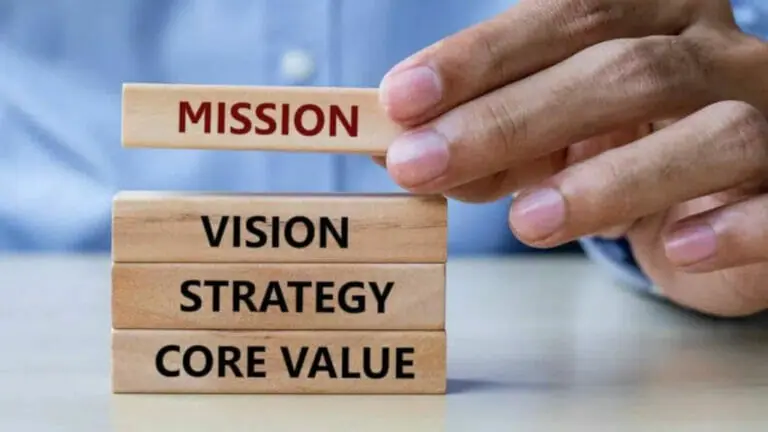
Agile Management with Kanban – What You Need to Know!
Kanban: a term heard time and again in the management sector. This method is gaining momentum in a growing number of industries. What exactly is Kanban? In which areas can it be used and what are its advantages? How is Kanban implemented? Here are the answers:
What is Kanban and where does it come from? A Kanban definition
Kanban is one of the most frequently used agile management methods today. It was originally developed for logistics management in production in the 1950s. At that time, engineer Taiichi Ohno was looking for a way to optimize production logistics for the Toyota plants in Japan. He wanted to improve production flow without compromising quality and at the same time, prevent bottlenecks and surpluses.
Ohno was inspired by supermarkets. In a supermarket, products are reordered when stocks are running low. Ohno successfully transferred this pull principle to production. The method was soon applied in other companies and adapted to other areas, in particular project management and software development, expanding the definition of Kanban even further. Employees and teams – even individuals in self-management – work on tasks using the pull principle. The method is simple, effective, provides motivation and ensures a fluid workflow.
The central feature of the Kanban process: the Kanban board
So how does Kanban work? The Kanban principle is surprisingly simple. Its central feature also gives the method its name. The word “Kanban” means card or board in Japanese. In the method, a board is used to visualize tasks and their status. Traditionally, a Kanban board has three columns: to do, in progress and completed. Colored cards represent the different tasks and are moved from column to column depending on their status.
The Kanban board is very flexible and customizable. In other words, you can add or remove columns for development process stages in KANBAN templates. Employees and teams work according to a pull principle. As soon as they’ve completed one task, they “pull” another task that that needs to be completed. This ensures that all tasks are carried out quickly and shows just how agile Kanban is.
These are the basic steps in Kanban. Modern Kanban boards are no longer necessarily analog, but are used in digital or a combined form. If you’re planning to use Kanban for project management, it can be easily implemented with a software tool and Kanban templates, for instance in PowerPoint.

You can download the Kanban PowerPoint template here: https://www.presentationload.com/kanban-powerpoint-presentation.html
Rules of the Kanban method: four principles and six practices
David Anderson, who applied Kanban to software development in 2007, added four basic principles and six practices to the Kanban system to ensure and increase its functionality.
The four principles are:
- Start with what you do now:
Kanban doesn’t change processes; it’s applied to processes so that they can adapt themselves. This allows it to be introduced at any time and without major changes. - Track incremental, evolutionary changes:
Kanban is designed to bring about profound changes. However, these changes should never be introduced just once, but should be developed in an evolutionary way. This minimizes uncertainties and resistance. - Take current processes, roles and responsibilities into account:
Since Kanban is not a revolutionary innovation, existing organizational structures and processes that are viable and valuable don’t have to be abandoned. - Encourage leadership at all levels:
Kanban should not only encourage improvements at the managerial level. It should be accepted and implemented by everyone involved to ensure that the day-to-day, practical level also benefits from it.
The six practices are:
- Visualize workflow:
Visualizing process steps or tasks on the Kanban board makes them accessible to everyone. Establish a continuous and transparent workflow. - Limit the number of tasks:
The number of tasks in progress must be limited to avoid too many tasks being processed at the same time. This helps maintain focus and avoid bottlenecks that could cause a backlog of tickets. - Define clear rules:
Guidelines and rules of the process (for example, when a task is considered completed) should be clear to everyone involved. - Encourage leadership:
Everyone is expected to take responsibility and be involved. - Use models:
Models are useful tools to help the team gain a better understanding and find more efficient approaches. - Continuous improvement:
Processes and practices must be regularly analyzed and adapted to achieve sustainable, continuous improvement.

Is there anything Kanban can’t do?
Nothing in life is perfect, not even Kanban. As with all methods, there are advantages and disadvantages, strengths and weaknesses. It may not be the best choice for every field of work. That’ s why it’s necessary to weigh the pros and cons.
What works well with Kanban and when is this method beneficial?
- When it comes to work management, Kanban shows how agile it is. Work motivation and speed increase through the high degree of self-organization and personal responsibility the method generates.
- With Kanban, work distribution and management is largely autonomous. As a result, management tasks are reduced.
- Kanban is relatively flexible. It can be easily adapted to individual processes and can also be combined with other management methods.
- The agile method promotes fast processes and reveals problems and misguided developments just as quickly.
And what are Kanban’s weaknesses?
- For Kanban to function, work steps and tasks must be clearly delineated. Processes that are too interdependent can’t be carried out efficiently.
- Because Kanban tasks are not specifically delegated, time management can become a problem.
- In the case of tight deadlines, other methods may be more appropriate.
- In teams comprising of highly specialized employees, Kanban can lead to bottlenecks and unequal workloads.
- In other words, Kanban should ideally cover an even spectrum of competencies.
- The Kanban board needs to be continuously managed to maintain a clear overview.
Similar and yet different: Kanban and Scrum
Scrum is equally well-known and used as Kanban. Scrum is another agile project management method. Although it has a lot in common with Kanban, it has some features that make it different. Many who want to use Kanban or Scrum in project management wonder which method is best for them. There is no simple answer to this question and there’s really no need for one either. These methods are not mutually exclusive; they can be combined. Here’s a look at their similarities and differences:
The similarities:
- Both methods are agile and work with a pull mechanism (tasks are selected from a task pool) which limits the work in progress.
- Both Kanban and Scrum promote and emphasize transparent processes and accountability of participants at all levels.
- Through regular analysis, both methods can be continuously improved to become progressive processes.
This is how Kanban and Scrum are different:
- Scrum has a more methodical foundation and is more complex than Kanban. This affects processes (for example in the form of iterations) and rules.
- Scrum assigns fixed roles to the participants (Product Owner, Scrum Master and Team). This means that Scrum requires a team of a certain size, while Kanban can be used even by individuals to organize their own work.
- Scrum includes an additional task assignment category, a backlog, which is a prioritized list of all to-dos and requirements. This is introduced during the planning stage. This tool is optional in Kanban.
- A Scrum board is reset after a Sprint, while the Kanban board can, in principle, persist.
- Scrum’s structure is only suitable for project work and not for routine tasks, whereas Kanban can be applied to both.

Hybrid solution: Scrumban
That Kanban and Scrum work well together is nothing new. That’s why there’s a hybrid model: Scrumban. It combines elements from both methods. Meetings, sprints and feedback rounds from Scrum are combined with the Kanban idea of cross-level responsibility and improvement. It’s highly flexible, meaning you can pick and choose which features from each method you would like to combine.




